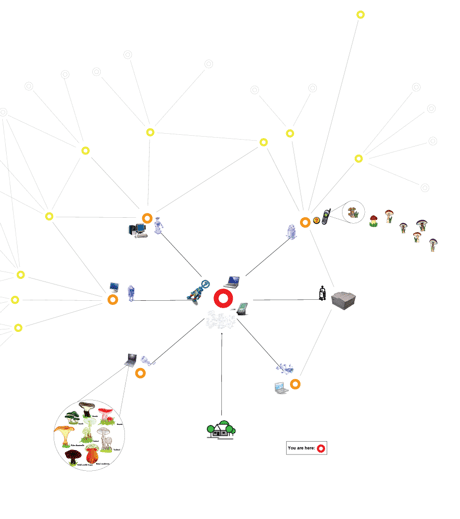by Magnus Boman, Kristofer Franzén and Fredrik Espinoza
Researchers at SICS are developing new middleware for integrating competence and knowledge management tools to make knowledge work more efficiently while leveraging individual interests and social networks.
Successful cooperation depends not only on the ability to easily find, use, share and develop knowledge and competence, but also on participants interests, experiences and skills. Finding, exchanging, aggregating and relaying knowledge are actions we all perform on a daily basis as part of cooperation. People and organizations also often find it necessary to find, contract, reimburse (financially) and evaluate people with specialist competence. The fact that people who cooperate and collaborate generally have common interests is usually understated, but such common interests strongly impact on the results of the cooperation. A network of people of varying skills and experience is a valuable source of help in solving concrete problems, but describing the skills necessary to do this is often a difficult task.
When it comes to ICT tools that support the search for skills and competences and the features of collaboration mentioned above, people use a plethora of digital support systems, and will probably continue to do so for the next five to ten years. Although each tool is well suited to its specific usage, there is a lack of support for integrating and aggregating solutions as well as for personalizing them to individual needs. The social networks that connect people are not efficiently exploited, partly because relativizing and centring a social network to a particular user is a complex problem.
We propose to improve the situation by introducing Human Grid between the human users and the underlying support tools. This is a layer for integrating services and connecting skilled people in a user-centred network. It is meant not to increase the problem of disparate systems, but rather to enhance the user's desktop with an organizationally and individually adapted view which is easily turned on or off, and which includes the ability to run the usual tools from the usual providers. To achieve this increased utility without imposing yet more intrusiveness on the users work processes or physical work tools requires advanced solutions to many separate problems that are rarely dealt with collectively.

Physicists, medical researchers, engineers and other work groups already use Grid computing: it is an effective way of utilizing the computing power of distributed and networked computers when and where it is most needed. In Human Grid the resource being tapped is not computing power but human competence. The two paradigms agree in that the use of the network resources should have a minimal impact on the user and the required infrastructure should already be in place. What is missing is the middleware that allows the user to switch on the network view of regular activities. The primary concern for such middleware must be the ease of use, transparency and scalable accessibility for its users. It should also be secure and should strive to protect users privacy, for example by making available the proposed uses for information, competence and knowledge that may be harvested in a particular situation. Trust mechanisms, similar to those used to preserve and share source code and intellectual property (eg Creative Commons) should be included. It should be possible to convert implicit competence, on group, project and organization levels, to explicit competence when the demand arises.
We are working on a four- to five-year time horizon, with the first phase of the project now behind us. Work is in progress in a number of areas: social networks for tying together users; language technology for gathering the necessary traces of human activity and competence; and service-oriented architectures for analysing the relationships between underlying services and solutions for their integration and aggregation.
The first industry partner of the project is HP Labs, Palo Alto, which has demonstrated a strong interest and prior research in the area. The primary researchers at SICS are Magnus Boman, Kristofer Franzén and Fredrik Espinoza.
Please contact:
Magnus Boman, Kristofer Franzén, SICS, Sweden
Tel: +46 8 633 1500
E-mail: mab![]() sics.se, franzen
sics.se, franzen![]() sics.se
sics.se









